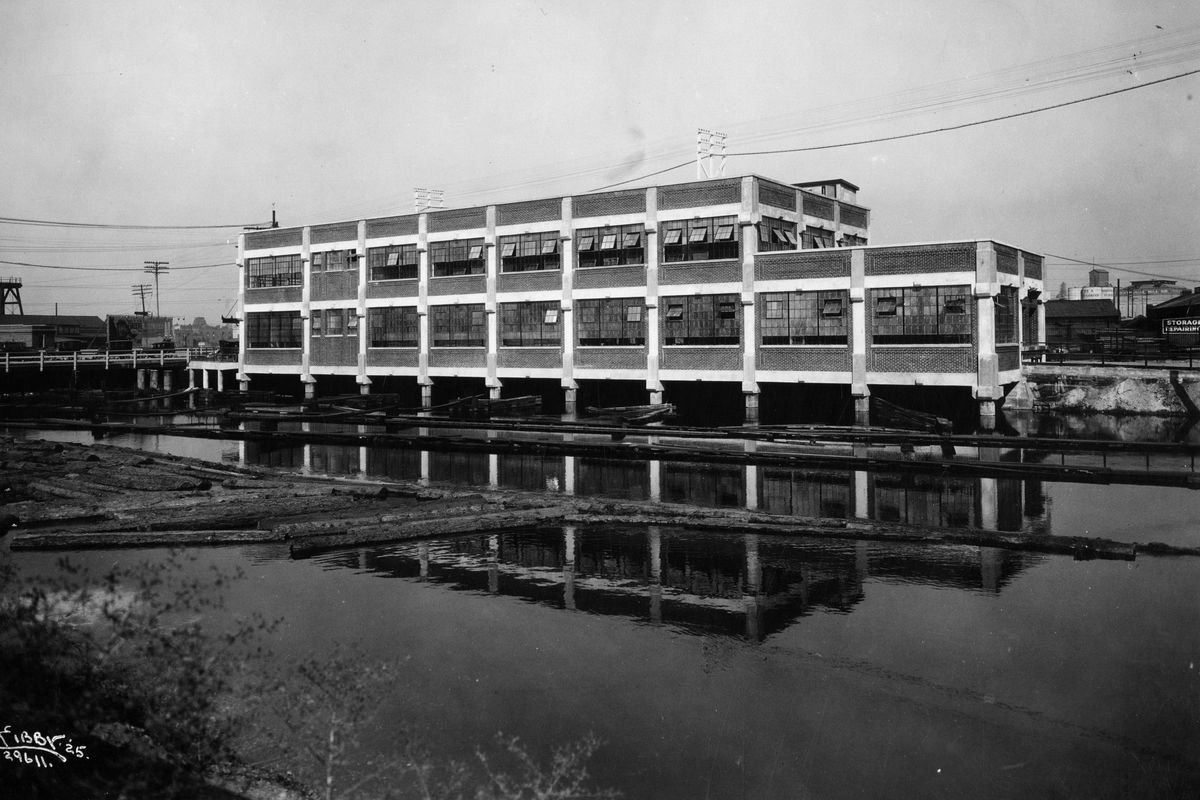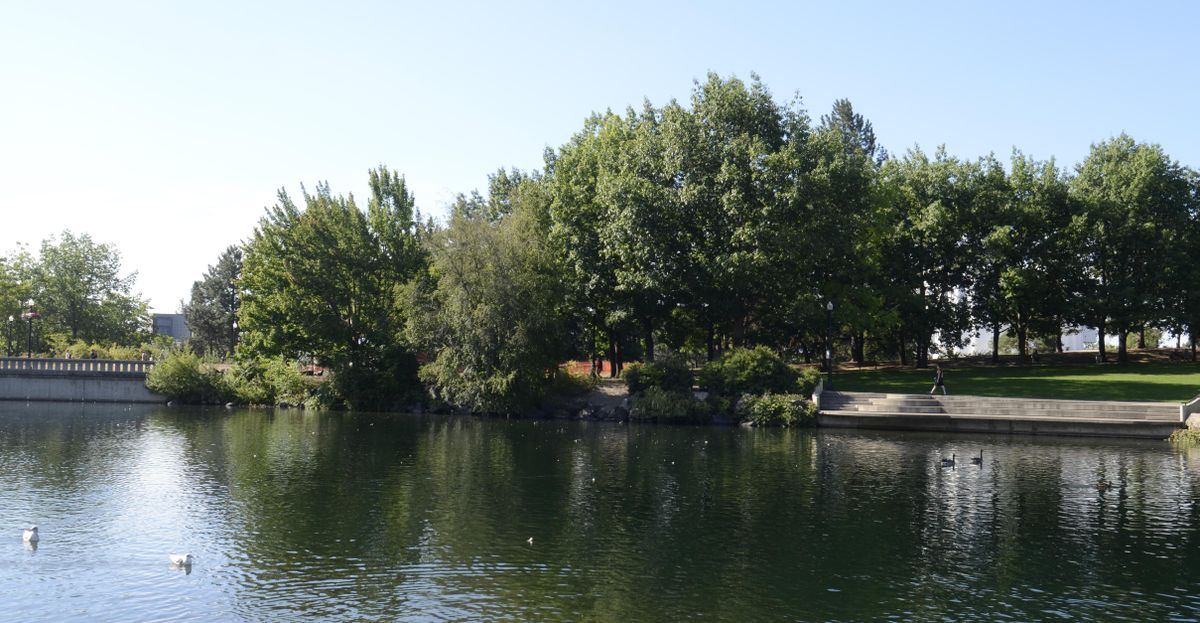Then and Now: Railway Mail Terminal
1925: The Railway Mail Terminal, sometimes called the Post Office Annex, was built and leased back to the Postal Service by the Great Northern Railway in 1913, the year that the Postal Service began carrying domestic parcels in addition to letters. The building gave more room for workers of the Railway Mail Service. It sat next to the Great Northern Railroad Depot on Havermale Island, built partially on pilings in the south channel in the Spokane River. (Libby Collection/Eastern Washington State Historical Society Archives)
From the earliest days of American railroading, securing and moving the mail was a priority. In the mid-1800s, canvas bags of mail were tossed onto passing trains or grabbed off a pole next to the tracks. The bags were usually locked for security until they reached a sorting hub in a major city.
The Railway Mail Service, inaugurated in 1869, sped up the process even more. It put a postal clerk on the train to sort mail while traveling. In 1898, there were 42 mail clerks running in and out of Spokane in all directions. Because of the hardship of long hours on a train and being away from home, the clerks got premium pay. Spokane-based Railway Mail clerks worked the longest route in the country, the 1,500-mile run from Williston, North Dakota, to Portland, Oregon. More clerks worked a sorting room at the Great Northern Railroad Depot on Havermale Island in Spokane.
Walter Hays, who retired from the Railway Mail Service in 1947 after 44 years on the job, said that in his early days, a clerk was paid a day’s wages whether he worked eight hours or 24 hours straight on a long run. By 1947, a clerk worked eight hours a day, five days a week. “One thing that hasn’t changed,” he said, “The mail must go through.”
In 1913, the Postal Service started domestic parcel post service and the depot office needed more space. The Great Northern Railroad quickly built a facility near the station and leased it back to the Postal Service, where it served its purpose for several decades. The building was known by several names, including the Railway Mail Terminal and the Post Office Annex.
In the 1930s, the downtown post office at Riverside Avenue and Lincoln Street was considered overcrowded and needed to expand. A large section of Havermale Island, next to the Great Northern depot and Railway Mail Terminal, was purchased to construct a new central post office. The site included today’s Clocktower meadow, Imax Theater and Pavilion. Several commercial buildings were torn down on the site in preparation. But the idea was scrapped in favor of extending the neo-classical Riverside Avenue building north to Main Avenue. That was completed in 1941.
With the rise of automobiles, trucks and air travel through the first half of the 20th century, rail transport became less crucial for moving both people and the mail. A new, larger postal annex was built on East Trent Avenue in the 1950s. The Railway Mail Terminal, the Great Northern Railroad Depot and the Union Depot were demolished in preparation for Expo ’74.
Hays, who retired as district superintendent, said he survived three train wrecks his first year on the trains but still loved the work. “It gets in your blood, this railway mail service. You eat it, sleep it, think it, study it and work at it all the time.”
– Jesse Tinsley

